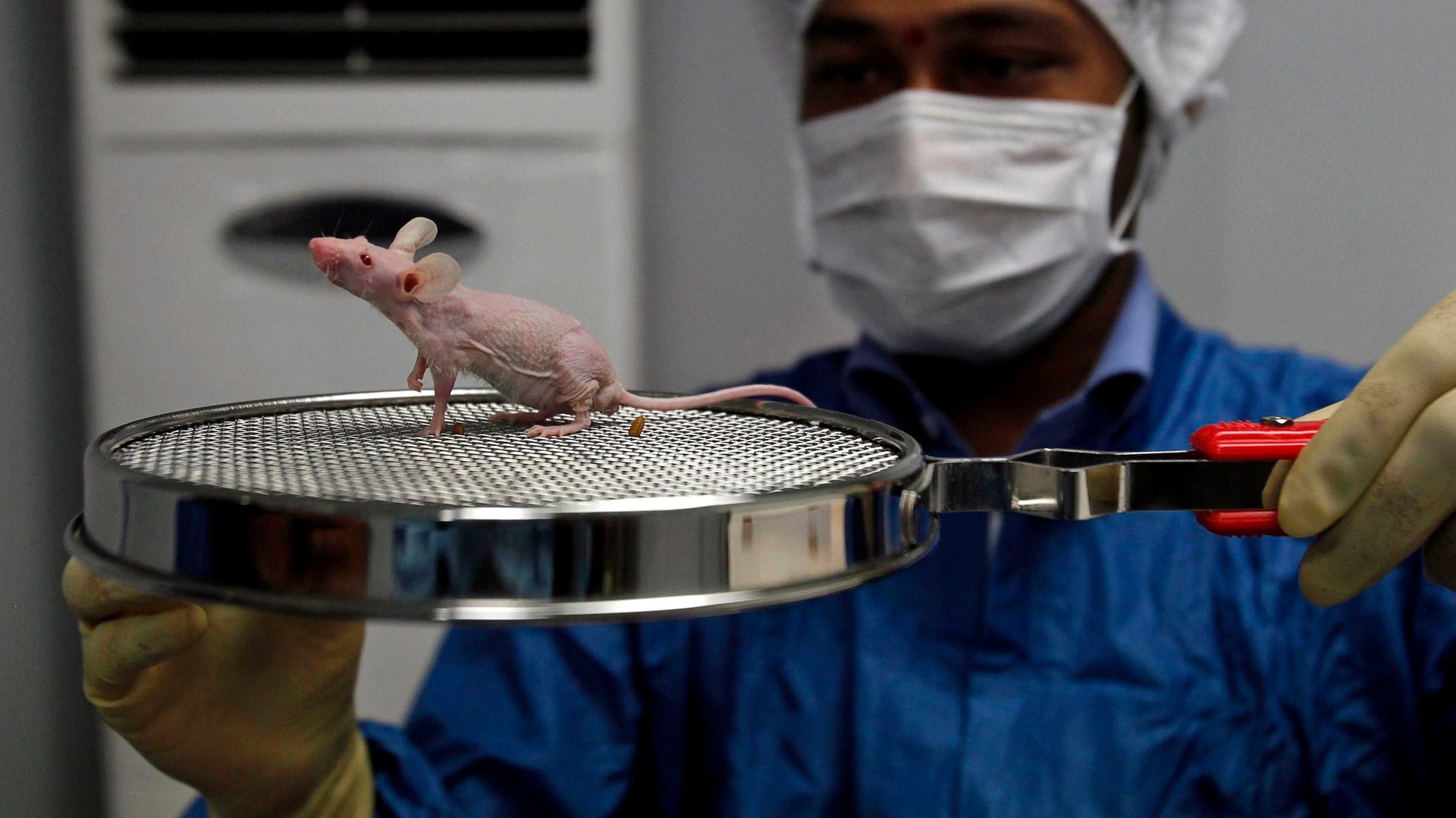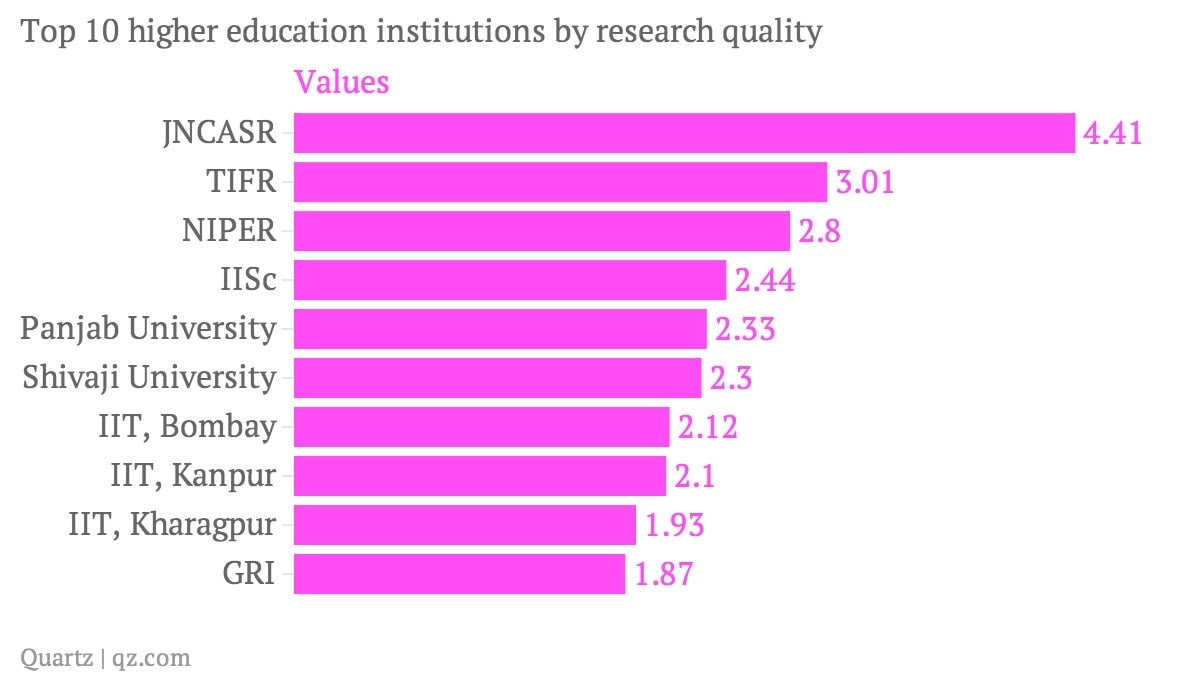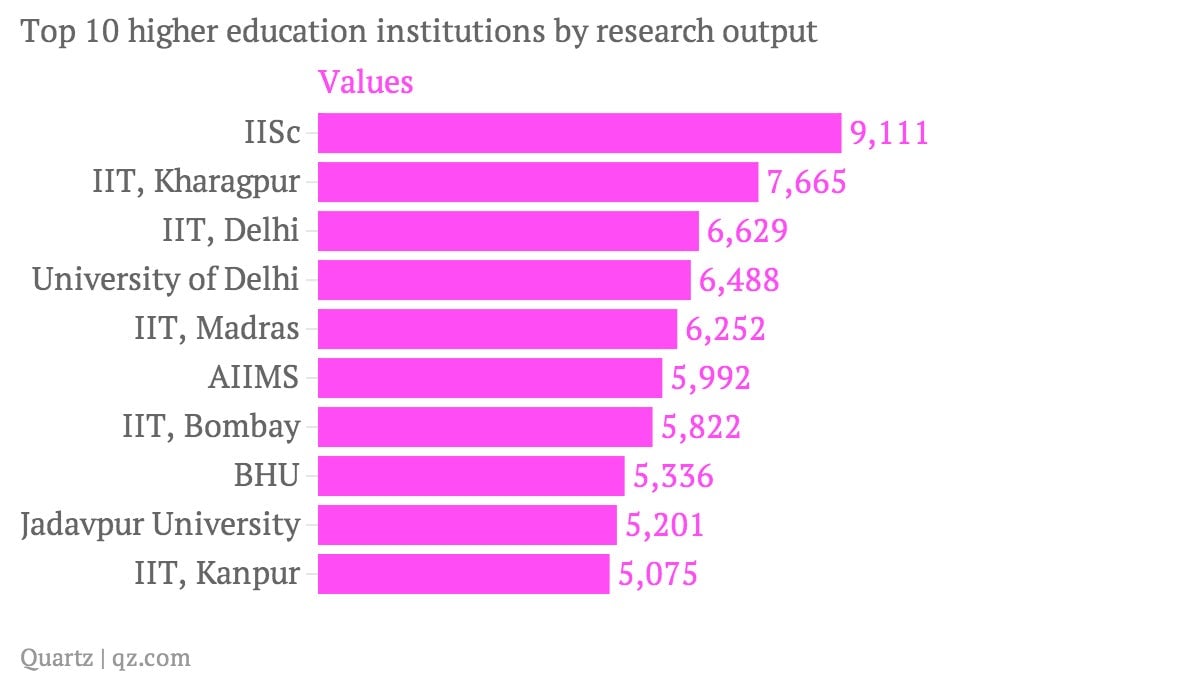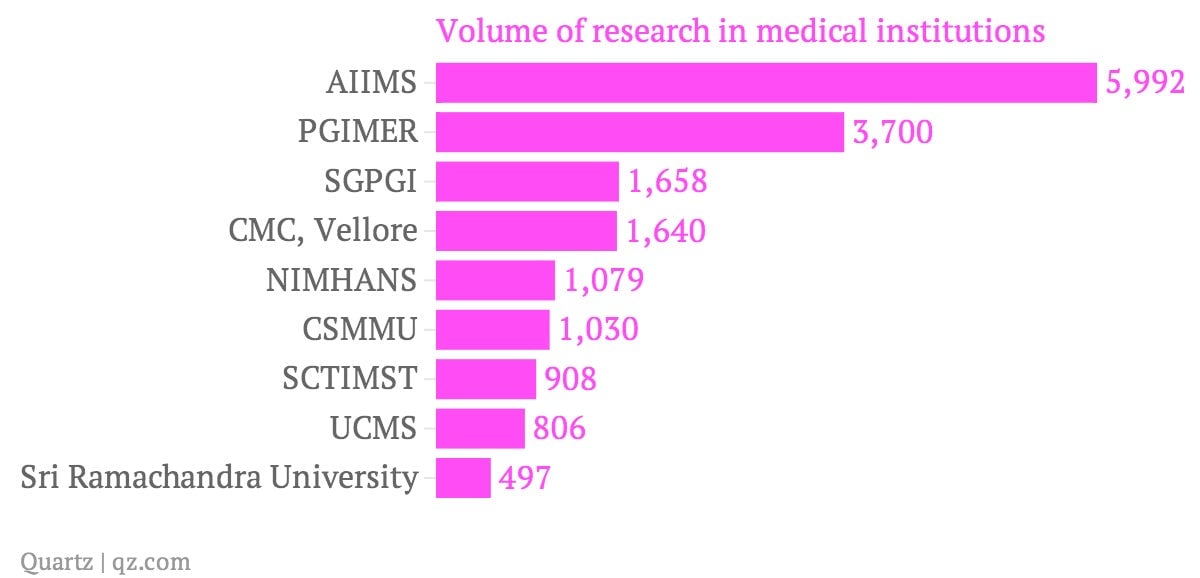It’s time to do some tough talking to IITs and IIMs—they are slacking in research
India is establishing a number of new institutions of higher education. Even as work is underway, there is a great deal of debate about the research output at existing elite institutions such as the Indian Institutes of Technology (IIT) and the Indian Institutes of Management (IIM), which count among its alumni world famous business executives and scientists.


India is establishing a number of new institutions of higher education. Even as work is underway, there is a great deal of debate about the research output at existing elite institutions such as the Indian Institutes of Technology (IIT) and the Indian Institutes of Management (IIM), which count among its alumni world famous business executives and scientists.
The Indian Institute of Science (IISc) is the top-ranked Indian university based on the quality and quantity of their research, according to the latest Scimago Institution Ranking World Reports, which assesses global universities based on research published in international journals. IISc features only at 386 in the list of more than 2,700 universities and has been sliding from its rank in previous years. Of the 16 IITs, only eight make it to the list—the seven oldest IITs feature between ranks 465 and 1,201. IIT Hyderabad is the only new IIT that makes the cut at the penultimate position (2,743).
Scimago assesses research every year over five-year periods from universities that have published at least 100 articles in international journals. The IIMs don’t even feature on the Scimago list. IIM Bangalore’s research output ranged between 39 and 78 articles a year during 2010-2013.
The six institutions that produce the best quality research in the country are non-IIT establishments, finds a soon-to-be-released study that uses Scimago data to track research performance within India. University of Delhi, Banaras Hindu University and Jadavpur University have as much research output as the IITs.

[JNCASR: Jawaharlal Nehru Centre for Advanced Scientific Research; TIFR: Tata Institute of Fundamental Research; NIPER: National Institute of Pharmaceutical Education and Research; GRI: Gandhigram Rural Institute]

Gangan Prathap of the National Institute for Interdisciplinary Science and Technology, who conducted the analysis, observes that on the quality scale, ‘1’ is the global benchmark. “If you see top institutions abroad they will be scoring much higher than 1 on the quality indicator. Many of our institutions are just at the global average, which is not to say that they are doing very well,” he said.
Indeed, of the medical schools on the India list, three barely score 1 on quality. The other six languish below the global standard.

[PGIMER: Postgraduate Institute of Medical Education and Research, Chandigarh; SGPGI: Sanjay Gandhi Postgraduate Institute of Medical Sciences, Lucknow; CMC: Christian Medical College, Vellore; CSMMU: Chhatrapati Shahuji Maharaj Medical University, Lucknow; SCTIMST: Sree Chitra Tirunal Institute for Medical Sciences and Technology, Thiruvananthapuram; UCSM: University College of Medical Sciences, New Delhi]

Private universities are doing well
The good news comes from private institutions that have raised their output and quality over the last five to six years. Gandhigram Rural Institute is now the 10th among government funded and private institutions in the country when it comes to quality of research.
“IISc and IITs have really huge budgets, Jadhavpur’s budget will be a fraction of that. Some of these private institutions, if they get budgets like the National Institutes of Technology, they will do much better,” Prathap said.

[VIT: Vellore Institute of Technology, Vellore; BITS: Birla Institute of Technology and Science, Pilani; GRU: Gandhigram Rural University, Dindigul, Tamil Nadu]

With their large budgets, IISc and the oldest IITs still come up trumps in a composite analysis of volume and quality of research in the country. But the performance of these schools is only average at best on global rankings like the Academic Ranking of World Universities and the QS World University Rankings.